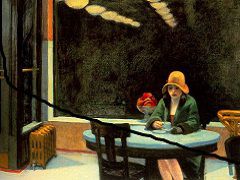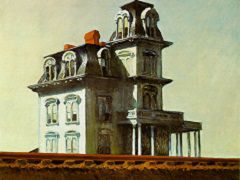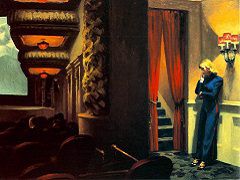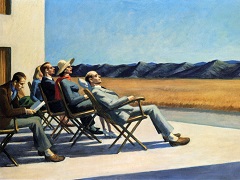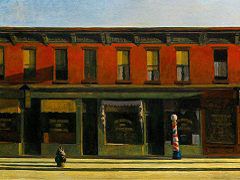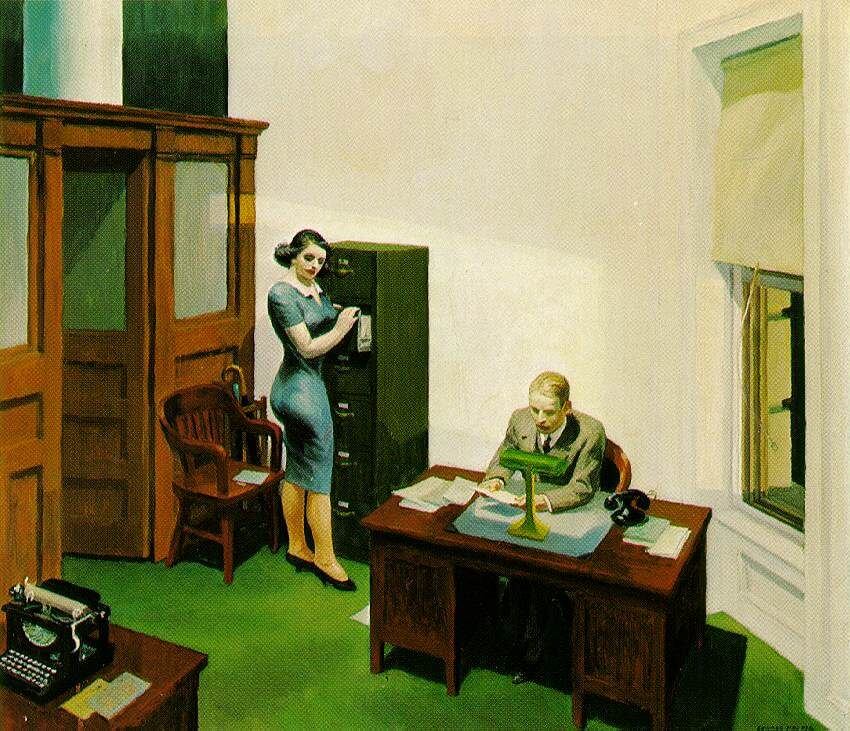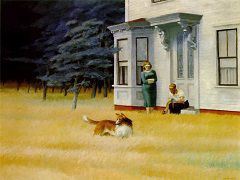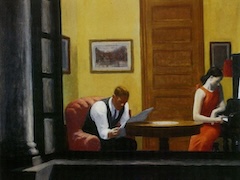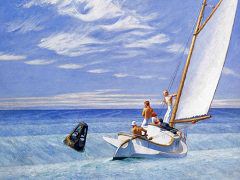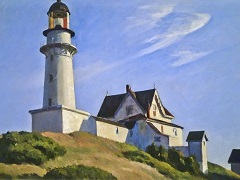Mansard Roof, 1923 by Edward Hopper
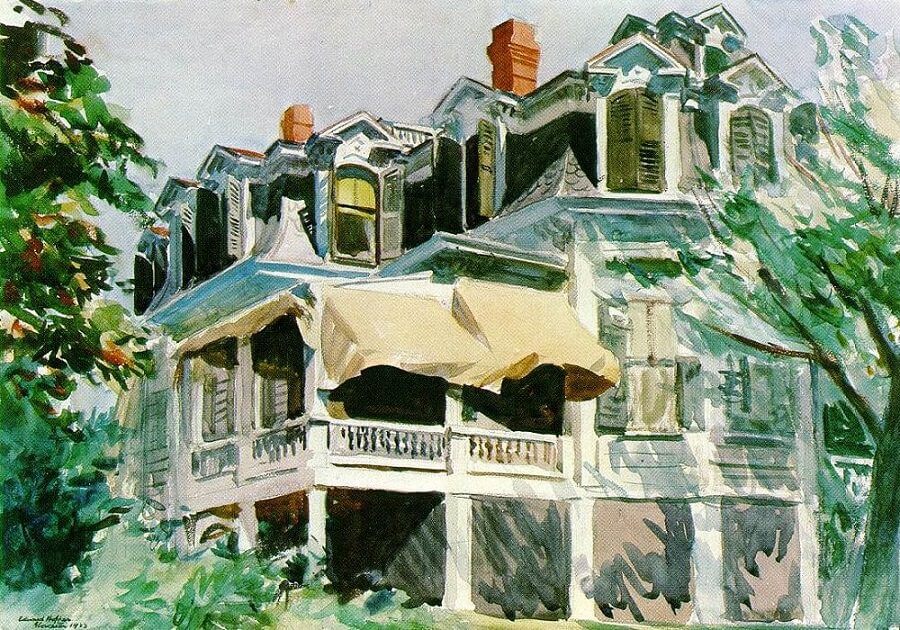
Edward Hopper wasn't popular nor famous, 1923, he was forty years old, tried a lot of things but still wasn't famous. He met his future wife, Josephine. A fellow art student in NY school of art, they were both student. She was a painter too.
She convinced him to go to Gloucester, famous place for people looking for objects, scenes to paint. She also convinced him to try watercolors. But he didn't paint pictures of the coast but Victorian Mansions.
He was really into depicting reality, of the architecture of the house. She took photographs of Hopper's scenes. He was accurate concerning the details of the house, the effect of light is essential here. The building has no symmetry but
Hopper chose to depict it from an angle that would give it balance, not in a frontal way. Geometric composition which contrasts with the use of a brushstroke.
At the time, mansions like this were seen as ugly, out of fashion, hideous and people didn't like it. They thought it was a vulgar style. Hopper was one of the first painter at this time to do paintings out of fashion as a symbol of the
past. By choosing this subject, he force people to consider the changes and indeed, in 1920's there was a lot of changes: immigration, race, alcohol, gender.... A decade of profound social changes, rise of consumerism and mass
entertainment: a revolution in morals. Hopper chose to side with the old America, the refusal of modern art, what reminded him of the past, the Golden Age. With this painting, Hopper was very successful, it won a prize and was purchased
by the Brooklyn Museum.


